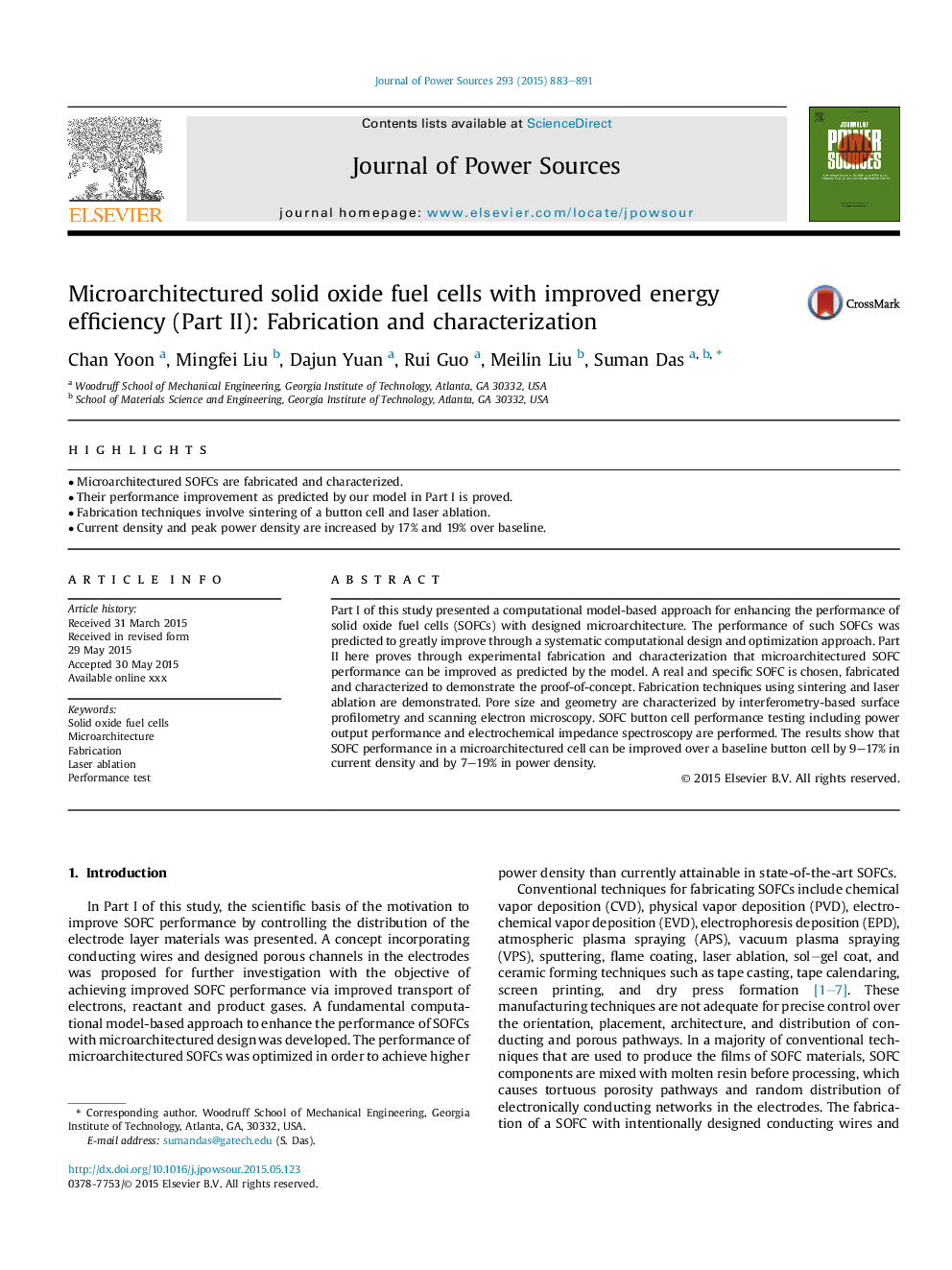| Article ID | Journal | Published Year | Pages | File Type |
|---|---|---|---|---|
| 7731237 | Journal of Power Sources | 2015 | 9 Pages |
Abstract
Part I of this study presented a computational model-based approach for enhancing the performance of solid oxide fuel cells (SOFCs) with designed microarchitecture. The performance of such SOFCs was predicted to greatly improve through a systematic computational design and optimization approach. Part II here proves through experimental fabrication and characterization that microarchitectured SOFC performance can be improved as predicted by the model. A real and specific SOFC is chosen, fabricated and characterized to demonstrate the proof-of-concept. Fabrication techniques using sintering and laser ablation are demonstrated. Pore size and geometry are characterized by interferometry-based surface profilometry and scanning electron microscopy. SOFC button cell performance testing including power output performance and electrochemical impedance spectroscopy are performed. The results show that SOFC performance in a microarchitectured cell can be improved over a baseline button cell by 9-17% in current density and by 7-19% in power density.
Related Topics
Physical Sciences and Engineering
Chemistry
Electrochemistry
Authors
Chan Yoon, Mingfei Liu, Dajun Yuan, Rui Guo, Meilin Liu, Suman Das,
